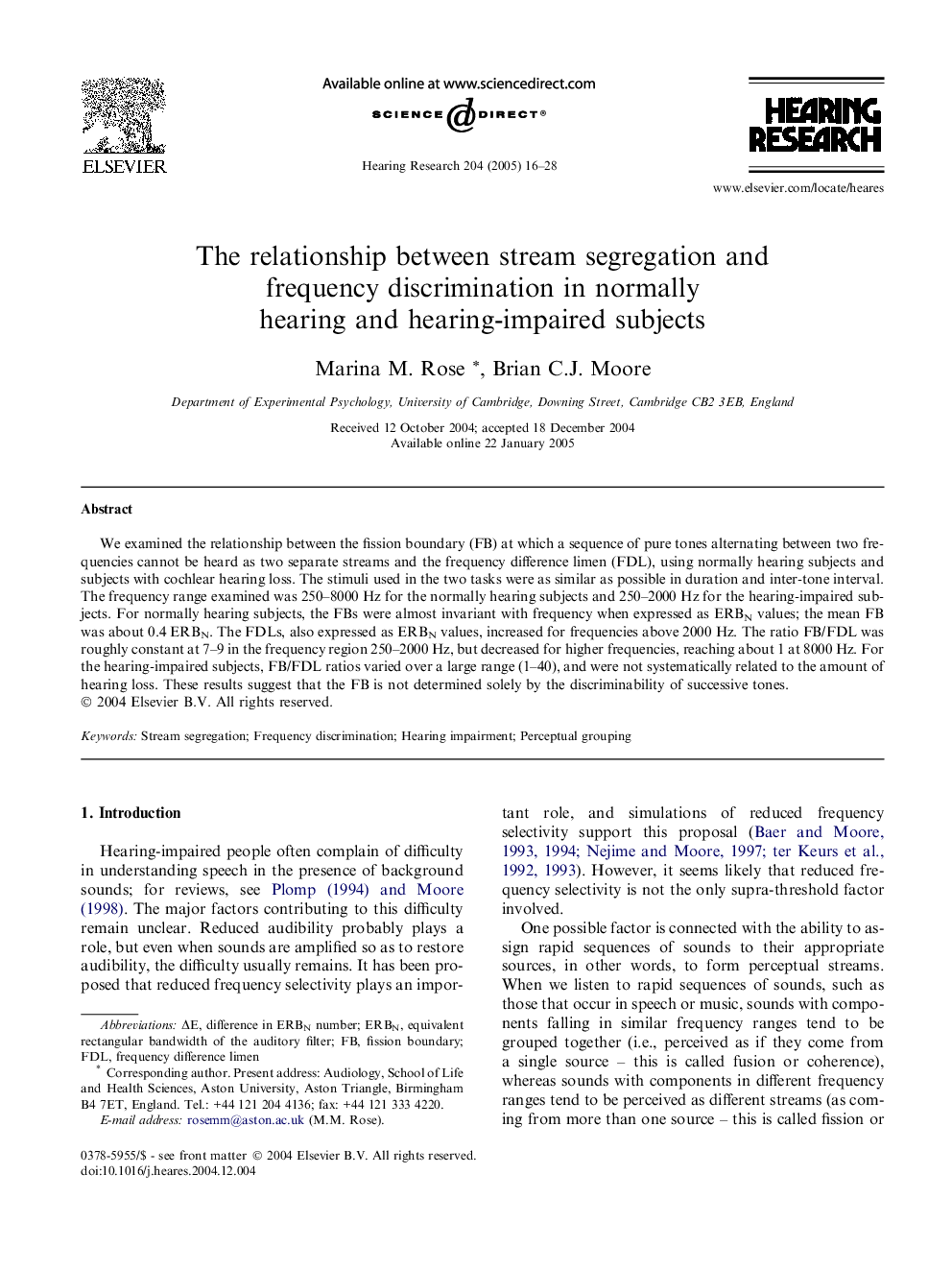| Article ID | Journal | Published Year | Pages | File Type |
|---|---|---|---|---|
| 9436521 | Hearing Research | 2005 | 13 Pages |
Abstract
We examined the relationship between the fission boundary (FB) at which a sequence of pure tones alternating between two frequencies cannot be heard as two separate streams and the frequency difference limen (FDL), using normally hearing subjects and subjects with cochlear hearing loss. The stimuli used in the two tasks were as similar as possible in duration and inter-tone interval. The frequency range examined was 250-8000 Hz for the normally hearing subjects and 250-2000 Hz for the hearing-impaired subjects. For normally hearing subjects, the FBs were almost invariant with frequency when expressed as ERBN values; the mean FB was about 0.4 ERBN. The FDLs, also expressed as ERBN values, increased for frequencies above 2000 Hz. The ratio FB/FDL was roughly constant at 7-9 in the frequency region 250-2000 Hz, but decreased for higher frequencies, reaching about 1 at 8000 Hz. For the hearing-impaired subjects, FB/FDL ratios varied over a large range (1-40), and were not systematically related to the amount of hearing loss. These results suggest that the FB is not determined solely by the discriminability of successive tones.
Keywords
Related Topics
Life Sciences
Neuroscience
Sensory Systems
Authors
Marina M. Rose, Brian C.J. Moore,
